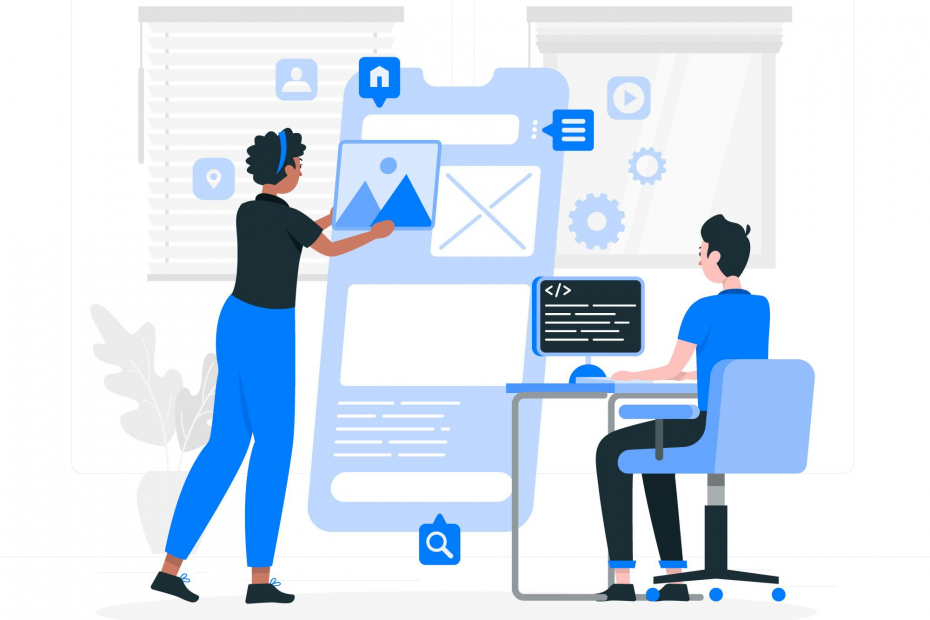If you want to successfully develop a mobile app of your own, there are few crucial aspects you need to keep in mind. Getting these aspects right is of utmost importance if you want the app to be a hit. When you are developing the first version of the mobile app, it needs to have a simple and intuitive user experience. The features need to be such that your target audience finds the app useful. Adding too many features might make them confused as to what the purpose of the app is. So how do you define and plan your mobile app features? Take a look as we share the steps to planning the right mobile app features.
How to Plan the Best Features for Your Mobile App
Identify your Concept
The first step to planning the features of your mobile app is to identify your concept. You can either develop one concept or identify multiple ideas and work your way through. In this step, you will have to figure out what the purpose of your mobile app is. This means asking questions like how will the app help your users, what will be achieved by building the app, how will the app engage users, among other questions. You can also use a Product Requirements Document (PRD) as well to simplify your concepts. A PRD template has different sections like business requirements, mobile app objectives, monetization model, feature prioritization, technical requirements, and more.
Find Out What Your Users Want
Finding out what your users want is related to identifying your concept. Once you have a better idea about users’ problems, you can create a solution through your mobile app. Knowing your users better will allow you to plan and design the features as well. To find out information about your audience, you will need to conduct market research. Market research will also let you find out more about your competitors as well. This will help plan your features in such a way that you can distinguish yourself from your competitors as well as take inspiration from the tactics and strategies they used.
Figuring out what your users want is also important to decide on the features. For example, if your users prefer a direct and simple layout, building an app with complicated features will not be successful.
Set Goals for Your App
The next step in regards to planning mobile app features is to set goals. The objectives need to be SMART. This means that they need to be specific, measurable, and achievable. When you set goals for your app, all the different departments like the technical or the marketing department will have an idea of what needs to be done. As such, everyone will be working on what needs to be done to achieve the goal, diminishing any confusion. From the goals set, you can now turn them into themes. Themes are essentially the success criteria that are used to achieve your goals.
Make an App Flowchart
You can also make an app flowchart to act as a visual aid. The flowchart will allow you and your team to be aware of what needs to be done and how is it going to happen. A good flowchart should be concise and easy to read. It includes certain things like the concept, workflow, budget, deadlines, development steps, team members, and stakeholders. Visualization also increases efficiency. You can sketch out the design or the navigation screens to show their flow.
Create App Wireframes
Once you have a solid idea about what the mobile app is all about, it is time to create wireframes. An app wireframe is sort of the bareboned stripped-down version. It only shows the main functions and you can establish what interactions you want available to your users. You can also show the app wireframe to external developers and designers to gather their expert opinion. There are several wireframing tools available in the market that you help you in the building process.
Look into the Technicalities
Depending on the number and kind of features you want to include in your mobile app, the technicalities will differ. As mentioned above, if you are new to building an app, it is best to stick to simple features. Not only will it allow your users to get a better understanding of the concept but it will be relatively easier to build in terms of technicalities. The more technically challenging it is, the longer the development process will be. It will also consume more resources in turn resulting in greater development and maintenance costs. You can also consult an external technical expert on the matter. Make sure to cover topics like security, maintenance, platform capabilities, device compatibility, connections, and support requirements.
What are the Must Have Mobile App Features?
Now that you have a better idea about what you should keep in mind when planning the features for your mobile app, it is time to look at the must-have features. Not only will having these features make your app successful, but great as well. To begin with, the app needs to be easy to navigate. The design should be such that information can easily be accessed. Too much clutter or distractions will simply lead to users switching to a different app. If you use image, make sure that the picture resolution is high. The screens need to load faster and there needs to be ample security. This is especially needed if your app collects personal information. Overall, more emphasis should be put on user experience.
Conclusion
If you want your mobile app to be successful, then special importance should be given to its features. Once you are done developing the app, make sure to send out updates periodically. This will allow the app to stay relevant and ensure a great user experience.
